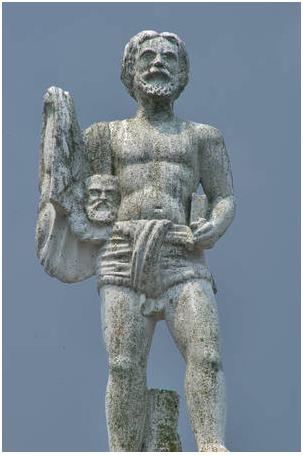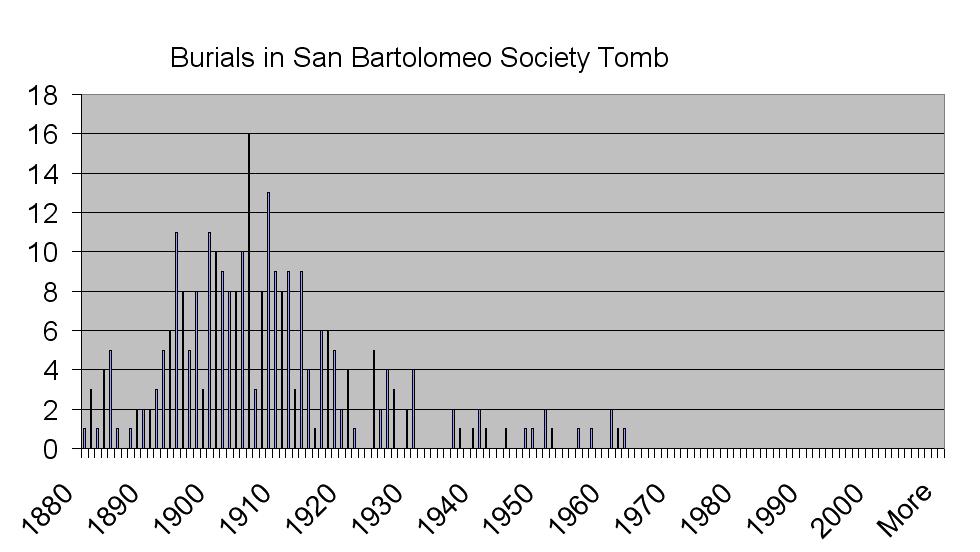Newsletter of the Congregazione di San Bartolomeo Apostolo
Issue 10 - 01 November 2009
| The Society Tomb By Chris Caravella |
 |
| The society burial tomb is one of the few tangible monuments that remain from the society's earliest years. It was constructed between 1882 and 1884, and we know this from newspaper articles in the New Orleans Daily Picayune. It's unfortunate that no society documents from this period are known to exist today but we always hope that one day someone might find some treasures tucked away in an attic. Till then, it is one of our goals to recreate as much of the society history as we can from public sources. Membership Chair, Larie Tedesco subscribes to an online newspaper service and has diligently searched for articles relating to Ustica and the society. Larie found the article featured here concerning the dedication of the tomb on March 23, 1884. Other friends of the society like Sal Serio, president of the Cefalutana Society, give us documents relating to our society as they come across them in their own research. Genealogical research also inevitably reveals snippets of history which add to the story of our past. |
| The tomb dedication article is rich in detail. Ustica Connection Issue 9 (i) from 2004 used newspaper articles describing San Bartolomeo feast day celebrations to vividly recreate the Usticese Community of the 1880's in New Orleans. nbsp; The tomb dedication article reaffirms the leadership of the society in 1884, the location of the society hall on Melpomene St and the relationship of Rev Father Manoritta of St Anthony of Padua Church to the Usticese community. nbsp; The article, as well, raises new questions and creates more potential for research. nbsp; In particular, who is Mr Tranchina of the Excelsior Restaurant? nbsp; Everything we find leads to more research and more completely fills in the story of our community. The Congregazione di San Bartolomeo Apostolo was formed in 1879 as an Italian benevolent society. nbsp; In these early days, long before the advent of life and health insurance companies, members could rely on the society for access to a medical doctor and protection for widows and orphans in the event of the death of the head of the household. nbsp; Burial in the society tomb was also a great benefit of membership. nbsp; The Funeral Home industry would not fully develop until the 1920's. Before then, few people would plan ahead for their burials and most could not afford the cost of a plot in a cemetery. The society again filled an important need for families and offered them the solace of remaining with their community even in death. As we gather today for this "Giorno dei Morti" event (ii), I wonder if our ancestors held similar events at the tomb - another fertile avenue for research. The tomb roster was published in the genealogical periodical, L'Heritage (iii) in 1984. The actual book is known to exist but may have been lost to the floodwaters of Hurricane Katrina in 2005. We can only hope that it was not destroyed and will one day be returned to the society. Along with the tomb roster were letters written by the society sometime in early 1910's regarding the tomb having reached its capacity. Before disturbing any of the remains in the tomb to make space for new burials, family members were offered the opportunity to move their loved ones' remains to a private plot. Apparently space was made available in the tomb - probably more that once - because through the 125 years of the tomb's existence, 274 souls were laid to rest in the tomb of just 40 vaults. |
|
